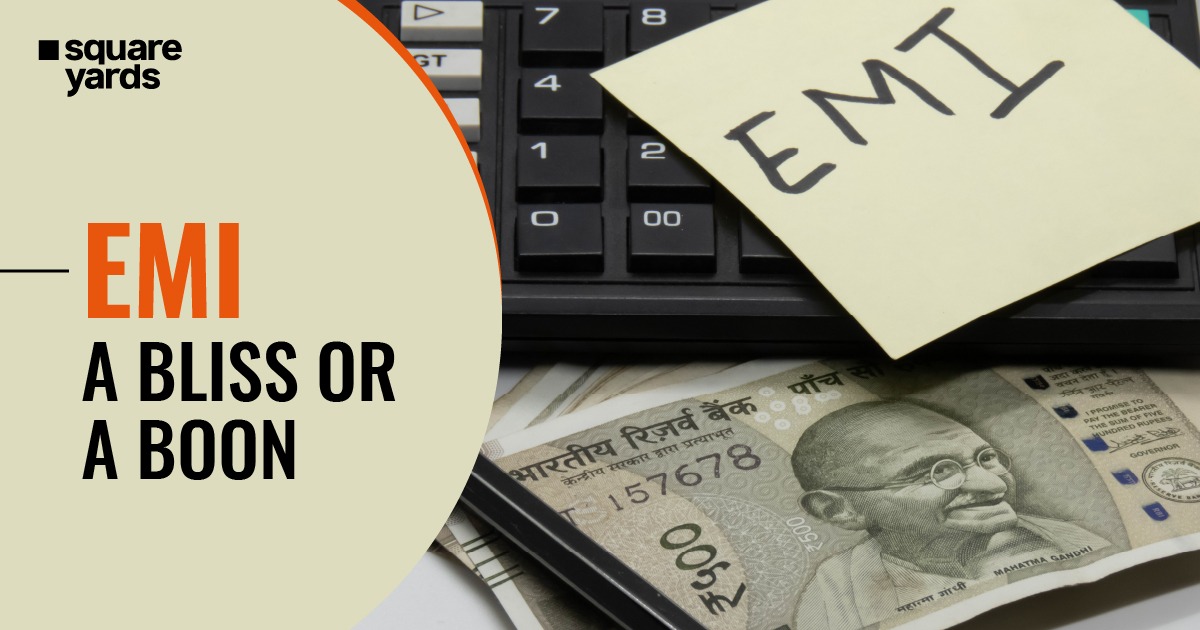Buying a home is a dream for many individuals and families in India. However, the high cost of real estate can often make it challenging to purchase a property outright. This is where the concept of Equated Monthly Installments - EMI comes into play, making home buying more accessible by spreading the cost over a period of time. In this comprehensive guide, we will explain what EMIs are and how they work in the context of buying a home in India. By understanding the intricacies of EMIs, you can make an informed decision and embark on your journey to homeownership.
What are EMIs?
Equated Monthly Installments (EMIs) are fixed monthly payments that borrowers make to repay their loans, including home loans. These payments comprise both the principal amount borrowed and the interest charged by the lender. The EMI amount remains constant throughout the loan tenure, but the proportion of principal and interest in each payment varies over time. The total loan amount, interest rate, and loan tenure determine the EMI amount.
How do EMIs Work?
When you opt for a home loan to finance your property purchase, the lender provides you with the required funds. You then start repaying the loan through EMIs, typically on a monthly basis.
Each EMI payment consists of two components:
- Principal Amount: This is the portion of the EMI that goes towards repaying the actual amount borrowed, i.e., the loan principal. Over time, as you continue making regular EMI payments, the principal amount gradually reduces, contributing to the repayment of the loan.
- Interest Amount: The interest amount is the cost of borrowing charged by the lender. It is calculated based on the outstanding loan balance and the applicable interest rate. In the early years of the loan tenure, a significant portion of the EMI goes towards paying the interest. As the loan tenure progresses, the interest component decreases, while the principal repayment component increases.
Factors Affecting EMI Calculation
Several factors influence the EMI amount for your home loan. It's essential to understand these factors to estimate the EMI accurately and plan your finances accordingly:
- Loan Amount: The total amount borrowed from the lender to purchase the property.
- Interest Rate: The rate at which the lender charges interest on the loan. It is usually expressed as an annual percentage rate (APR).
- Loan Tenure: The duration over which you choose to repay the loan. Home loan tenures in India typically range from 5 to 30 years.
- Down Payment: The initial amount you pay from your own funds towards the property purchase. A higher down payment can reduce the loan amount and, consequently, the EMI.
- Processing Fees and Other Charges: Lenders may levy processing fees, administrative charges, and other costs associated with the loan, which can affect the total loan amount and, consequently, the EMI.
Advantages of Home Buying on EMI
Home buying on EMI offers several advantages, making it an attractive option for aspiring homeowners:
- Affordability: EMIs allow you to spread the cost of the property over an extended period, making it more affordable by reducing the immediate financial burden.
- Tax Benefits: Under the Indian tax laws, both the principal repayment and the interest paid on the home loan are eligible for tax deductions, offering potential savings.
- Fixed Repayment Schedule: With EMIs, you have a predetermined repayment schedule, which simplifies financial planning and budgeting.
Points to Consider
While EMIs provide a convenient way to buy a home, it's important to consider a few crucial points:
- Affordability: Before finalizing a loan, evaluate your financial situation to ensure that the EMI amount fits comfortably within your monthly budget. A higher EMI may strain your finances, impacting your lifestyle and financial goals.
- Interest Rates: Compare the interest rates offered by different lenders to find the most competitive option. Even a small difference in the interest rate can significantly affect the total interest payable over the loan tenure.
- Loan Tenure: While opting for a longer loan tenure reduces the EMI amount, it also increases the total interest payable over the loan term. Strive to strike a balance between the EMI affordability and the overall interest cost.
- Prepayment Options: Some lenders allow borrowers to make prepayments towards their home loan, which can help reduce the principal amount and the interest burden. Check if your lender offers this facility and understand the terms and conditions associated with prepayments.
Conclusion
Equated Monthly Installments (EMIs) play a crucial role in making home buying more accessible for individuals and families in India. By understanding how EMIs work and considering the factors that affect their calculation, you can make an informed decision when opting for a home loan. Remember to assess your financial capabilities, compare interest rates, evaluate the loan tenure, and consider prepayment options to choose the most suitable loan structure for your needs. Homeownership is a significant milestone, and EMIs can pave the way for you to achieve this goal while managing your finances effectively.




